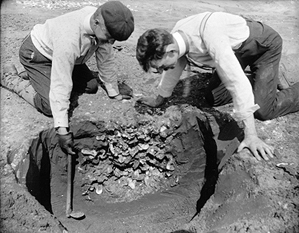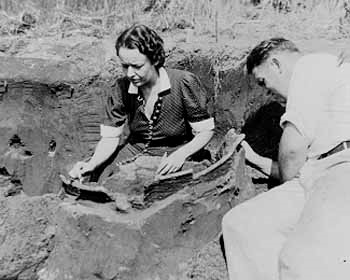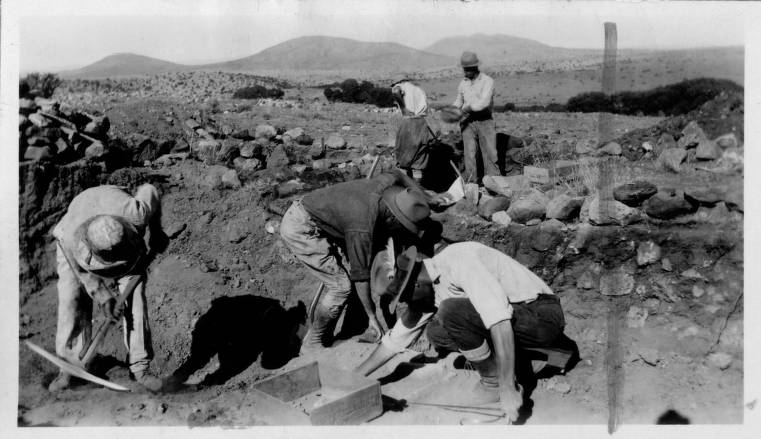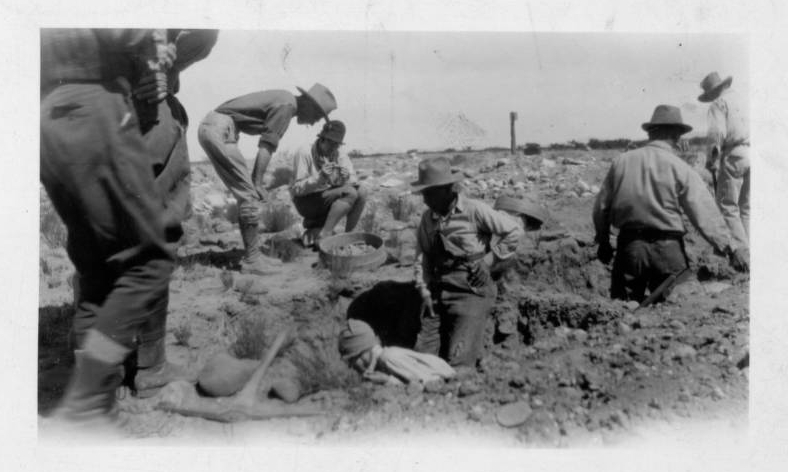Healing Through Repatriation: the Debates and Diplomacy Behind the Native American Graves Protection and Repatriation Act
Digging Into History
"A Collection of Skulls." Penn Museum / New York Times, 2011
"We rifle their graves, measure their skulls, and analyze their bones; we carry to our museums the utensils and weapons, the gods and jewels, which sad and loving hands laid beside them; we dig up the foundations of their houses and cart off the monuments which their proud kings set up. Nothing is sacred to us; and yet nothing to us is vile or worthless."
~ Daniel G. Brinton, Professor of Ethnology and Anthropology at the Academy of Natural Sciences in Philadelphia and Professor of Archaeology and Linguistics at the University of Pennsylvania, 1895

"Archaeologists investigating a Native American shell pit." New York Historical Society
Since their arrival, white settlers have taken remains and objects from Native American sacred burial grounds. Archaeologists and museum collectors wanted to gain massive collections to study and preserve what they perceived to be a dying culture.

"Dorothy Cross doing archaeological field research at the Abbott Farm site near Trenton." New Jersey State Museum 1937
Due to the high demand for remains and objects, Native American sites were often targeted by grave robbers. Additionally, impoverished tribes were forced to sell their ancestors’ remains and objects.
"The dead have no rights."
~ Thomas Jefferson
"When a White man's grave is dug up, it's called grave robbing. But when an Indian's grave is dug up, it's called archaeology."
~ Robert Cruz, Tohono O'odham activist

"Measuring a Burial Pit." Hennepin County Library, 1928.

"Expeditions' First Bowl Discovery." Hennepin County Library / Star Tribune, 1928